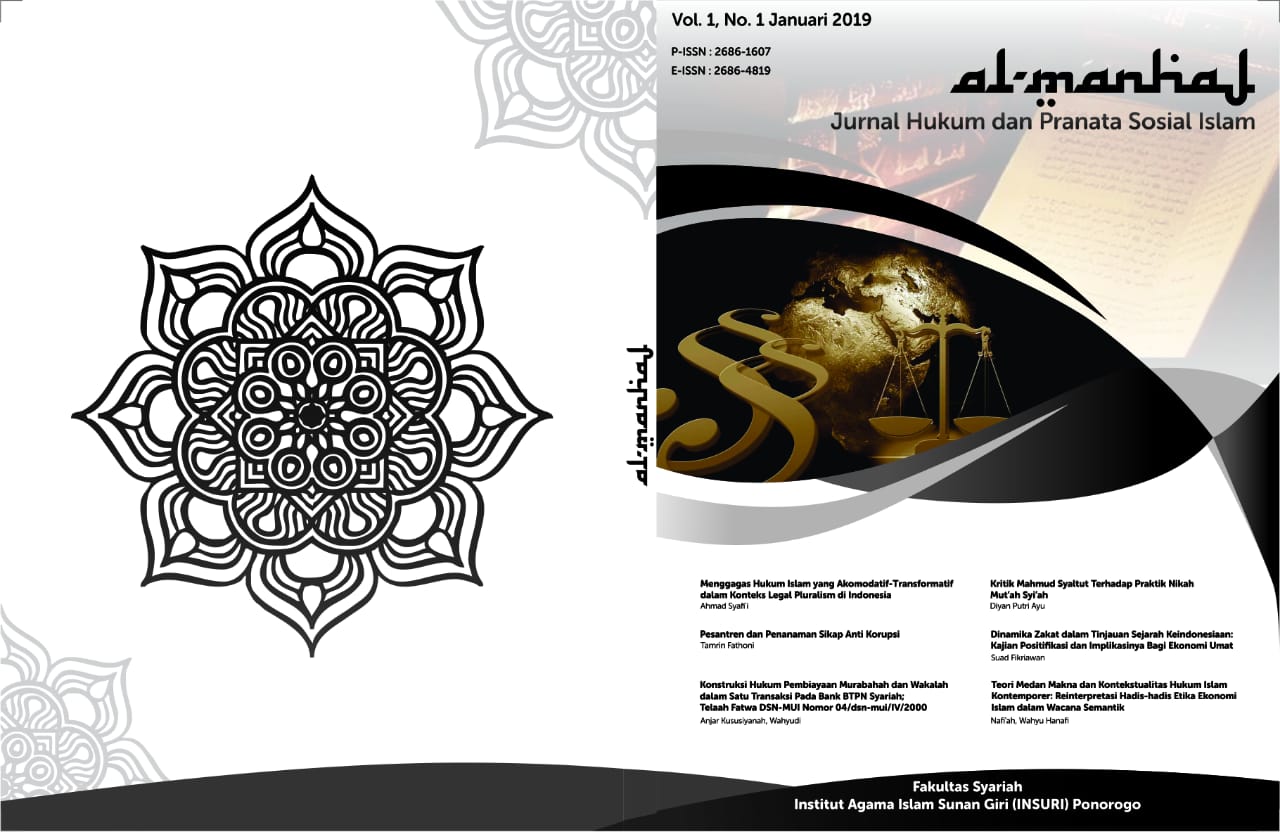PESANTREN DAN PENANAMAN SIKAP ANTI KORUPSI
DOI:
https://doi.org/10.37680/almanhaj.v1i1.107Keywords:
Culture, Pesantren, CorruptiAbstract
The purpose of this study is to explore the role of pesantren in instilling anti-corruption attitudes. Pesantren is empirically known as a successful institution in developing quality education, especially in the field of religion. In the midst of a number of compliments received from pesantren, there is criticism that must reflect the pesantren, that pesantren are considered to have not succeeded in perfectly educating students who have strong personalities in anti-corruption. That criticism is not without foundation. The ministry of religion which incidentally is the headquarters of the students, is also known as one of the ministries which often ministers stumble over corruption cases. Even though they are not a few who in their daily lives work as preachers and obligatory worshipers, and can even be categorized as scholars. This study uses qualitative research library type. Data collection by identifying discourses from books, papers or articles, journals, newspapers, internet (websites), and other information that is still related to pesantren studies. Data analysis uses descriptive analysis and critical analysis. Descriptive analysis is collecting and compiling data then the data is analyzed. Meanwhile, critical analysis is the interpretation of the text and addressing the meaning behind events scientifically. The results showed the need for pesantren stakeholders to reaffirm the pesantren culture to instill anti-corruption in their students. especially through his students. Because students with their pesanten culture (a) have a simple tradition of life an absolute requirement to be a pioneer of anti-corruption; (b) has strong religious insight, and (c) deep-rooted tradition amar ma'ruf nahi munkar.
Downloads
Published
How to Cite
Issue
Section
License
Copyright:
- Author retains the copyright and grants the journal the right of first publication of the work simultaneously licensed under a Creative Commons Attribution 4.0 International License that allows others to share the work with an acknowledgment of the work's authorship and initial publication in this journal.
- Author is able to enter into separate, additional contractual arrangements for the non-exclusive distribution of the journal's published version of the work (e.g., post it to an institutional repository or publish it in a book) with the acknowledgment of its initial publication in this journal.
- Author is permitted and encouraged to post his/her work online (e.g., in institutional repositories or on their website) prior to and during the submission process, as it can lead to productive exchanges, as well as earlier and greater citation of the published work (See The Effect of Open Access).
License:
-
Attribution — You must give appropriate credit, provide a link to the license, and indicate if changes were made. You may do so in any reasonable manner, but not in any way that suggests the licensor endorses you or your use.
-
No additional restrictions — You may not apply legal terms or technological measures that legally restrict others from doing anything the license permits.
You are free to:
- Share — copy and redistribute the material in any medium or format
- Adapt — remix, transform, and build upon the material for any purpose, even commercially.

This work is licensed under a Creative Commons Attribution 4.0 International License.














